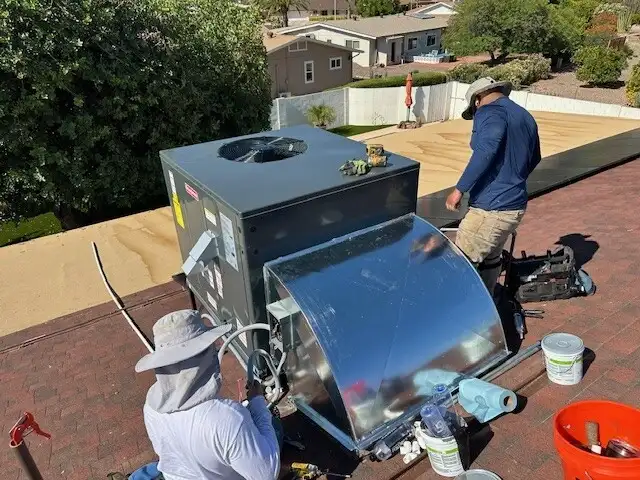
Heat pumps: how they work
Heat pumps move heat instead of generating it. In winter they draw warmth from outdoor air and bring it inside. In summer, they reverse and act like an air conditioner. This dual role makes them efficient and versatile for Arizona homes.
Benefits of heat pumps
- Efficient in moderate winter conditions
- One system for both heating and cooling
- Lower monthly operating costs
- Environmentally friendly without combustion
Limitations of heat pumps
They are less effective during freezing nights, though such temperatures are rare in Arizona. They may also cost more upfront than furnaces.
Furnaces: how they work
Furnaces generate heat directly, either using natural gas or electricity. They provide strong, steady warmth for homes that need robust heating.
Benefits of furnaces
- Consistent, powerful heating
- Lower upfront installation costs
- Longer lifespan compared to heat pumps
Drawbacks of furnaces
Electric furnaces can be expensive to run, and all furnaces require annual inspections for safety and efficiency.
Cost and efficiency considerations
Heat pumps are typically more efficient in Arizona’s climate and save money long-term. Gas furnaces may cost less upfront, but higher energy use offsets some of that savings. Electric furnaces are easiest to install but most costly to operate.
Frequently asked questions
- Can I use a heat pump year-round? Yes, they provide both cooling and heating, making them practical in Arizona.
- Do furnaces last longer than heat pumps? Furnaces usually last 15–20 years; heat pumps last about 10–15 with proper maintenance.
- Which is more cost-effective over time? Heat pumps generally cost less to operate and may offer long-term savings despite higher initial costs.
- Are gas furnaces safe? Yes, when inspected annually. Cracked heat exchangers and leaks are the main risks.
Choosing between a furnace and heat pump depends on home size, comfort preferences, and budget. With professional guidance, either system can provide reliable warmth in Arizona.